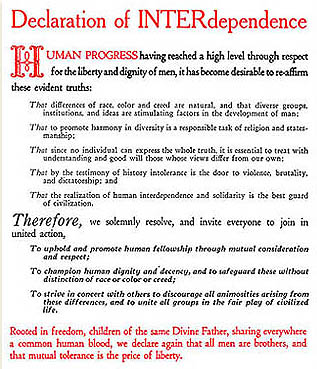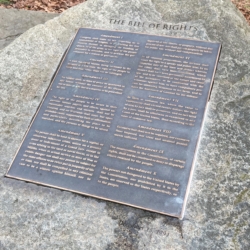the Open Siddur Project ✍︎ פְּרוֹיֶּקט הַסִּדּוּר הַפָּתוּחַ
a community-grown, libre Open Access archive of Jewish prayer and liturgical resources
This project is sustained through reciprocity for those sharing prayers and crafting their own prayerbooks.
Get Involved ✶ Upload Work ✶ Donate ✶ Giftshop בסיעתא דשמיא |
☰︎ Menu | 🔍︎
Search // Main //
👂︎ Public Readings, Sources, and Cantillation // Meḳorot (Sources) // Non-canonical Works // Exoteric // Modern Miscellany
Modern Miscellany 💬 Purim 2021: From Darkness to Light, by Rabbi Rachel Barenblat & Rabbi David Evan Markus (Bayit, 2021)Tropified texts for Purim 2021 juxtaposing the text of Queen Esther with the words of Vice President Kamalla Harris and poet laureate Amanda Gorman. . . . 💬 Nevertheless She Persisted: A Modern Esther Tribute for Purim and Women’s History Month, by Rabbi David Evan Markus (Bayit, 2018)Purim affirms Esther’s stand against official silencing, abuse of power, misogyny and anti-Semitism. At first an outsider, Queen Esther used her insider power to reveal and thwart official hatred that threatened Jewish life and safety. We celebrate one woman’s courageous cunning to right grievous wrongs within corrupt systems. The archetype of heroic woman standing against hatred continues to call out every society still wrestling with official misogyny, power abuses and silencing. For every official silencing and every threat to equality and freedom, may we all live the lesson of Esther and all who stand in her shoes: “Nevertheless, she persisted.” . . . 💬 איכה פרק ו׳ | Lamentations “chapter 6” in cantilized English, a supplement to public readings of Eikhah by HIAS (2018)As we prepare to observe Tishah b’Av and commemorate the destruction of Jerusalem that led to the exile of the Jewish people for centuries to come, we are acutely aware that we find ourselves in the midst of the worst refugee crisis in recorded history, with more than 68 million people displaced worldwide. Given these extraordinary numbers, the continued attacks on asylum and the refugee resettlement program in the United States over the last eighteen months are even more inhumane. Of course, we know that the proverbial 10th of Av will come, and we will rise up from our mourning with renewed resolve to support refugees and asylum seekers. First, though, we take time to dwell fully in the mourning demanded by the 9th of Av. We fervently lament the many cruel actions this administration has taken to limit the ability of refugees and asylum seekers to seek safety in our country, and we mourn for lives destroyed and lives lost. . . . הארבה כוסות ואת הארבה חופשות | The Four Cups of Wine and the Four Freedoms, by Dr. Aurora Mendelsohn and President Franklin R. RooseveltTraditionally each cup in the Passover Seder is liked to a promise made by God in these verses, Exodus 6:6-7. The four cups can also be associated with the Four Freedoms first articulated by US President Franklin D. Roosevelt on January 6, 1941, which were an inspiration for the Universal Declaration of Human Rights and were explicitly incorporated into its preamble. . . . Tishah b’Av, the ninth day of the month of Av, has historically been a day to mourn the Destruction of the First and Second Temples, centers of Israelite practice before the rise of Rabbinic Judaism (First Temple 975 BCE – 586 BCE; Second Temple 515 BCE – 70 CE) and the exiles that followed those destructions. Over the course of Jewish history this day of mourning and fasting has also come to commemorate many other tragedies that have befallen the Jewish people throughout history. This year we are beginning a new tradition. We are suggesting that in addition to, or instead of (depending on the norms of your community and personal practice) the traditional observance of Tishah b’Av, the time has come to use this powerful day to mourn the ongoing destruction of the “temple” that is our Earth, a tragedy for all peoples, creatures and living things, but one that is not complete and thus, with sufficient will and action, is in part, reversible. . . . 📄 the past didn’t go anywhere: making resistance to antisemitism part of all of our movements, by April Rosenblum (2007)It’s always a real struggle for the Left to successfully tackle oppression within its own ranks. But when we do it, our movements gain, every time, from the deeper understandings that emerge. To start the process this time, we need some basic information about what anti-Jewish oppression is and how to counter it. But it has to come from a perspective of justice for all people, not from opportunistic attempts to slander or censor social justice efforts that are gaining strength. . . . 💬 The Last Tishah b’Av: A Tale of New Temples, by Rabbi Arthur Ocean Waskow & Rabbi Phyllis Ocean Berman (2006)Long ago there came a Ḥassid, visiting from Vitebsk to see his Rebbe. Struggling up hills, over cobblestones, through narrow alleyways, the Ḥassid came panting, shaking, to the door of a pale and quiet synagogue. So pale, so quiet was this shul that the pastel paintings on the wall and ceiling stood out as though they were in vivid primary colors. As the Ḥassid came into the shul, he saw his Rebbe high on a make-shift ladder, painting a picture on the ceiling above the bimah. . . . A declaration in 1993 by Rabbi Arthur Waskow in response to the impending danger of global warming and other ecotastrophes brought about by the callous harm of human industry and land use decisions. Translated by Rabbi Zalman Schachter-Shalomi. . . . 💬 Proklamation der Grundrechte der Tiere | Proclamation of Fundamental Animal Rights | Proclamation des Droits Fondamentaux de L’animal (Die Grünen Bundesarbeitsgruppe “Mensch und Tier,” April 1989)A Proclamation of Fundamental Animal Rights drafted by the West German Green Party in 1989 upon the 200th anniversary of the “Declaration of the Rights of Man” (1789), in German with translations in English, French, and Portuguese. . . . The Universal Declaration of Animal Rights (UDAR) was first proclaimed in Paris on 15 October 1978 at the headquarters of UNESCO (United Nations Educational, Scientific and Cultural Organization) with the ambition of it being formally adopted in the United Nations General Assembly. The French League of Animal Rights spurred the development of a revised text written during the General Assembly of the International League of Animal Rights, held June 3–4, 1989 in Luxembourg, and adopted on October 21, 1989. The declaration was submitted to the UNESCO Director General in 1990 however it has never been formally adopted. . . . 💬 Four excerpts from a “Letter from a Birmingham Jail” by Rev. Dr. Martin Luther King Jr. (1963), cantillated by Rabbi David Evan MarkusThis is a haftarah comprised of excerpts from a “letter from a Birmingham jail” by Martin Luther King Jr. (16 April 1963). The haftarah was cantillated by Rabbi David Evan Markus for a public reading on MLK Shabbat (the sabbath preceding MLK Day). . . . 💬 “I have a Dream” by Rev. Dr. Martin Luther King Jr. (1963), cantillated by Rabbi David Evan MarkusIn 2017, Rabbi David Evan Markus prepared the end of Dr. King’s famous speech read at the March on Washington for Jobs and Freedom (August 28, 1963) with trope (t’amim, cantillation). The following year on Facebook he shared a recording of the reading hosted on Soundcloud. Rabbi Markus writes, “This weekend at Temple Beth El of City Island, I offered the end of Dr. King’s 1963 “I Have a Dream” speech, which I set to haftarah trope because I hold Dr. King to be a prophet. When my community applauded, I offered President Obama’s response, ‘Don’t clap: vote.’ And do more than vote: organize, donate, volunteer, help, heal, advocate. Only then, in Dr. King’s words quoting Isaiah 40:5, will ‘all flesh see it together.'” . . . 💬 Excerpts from the Speeches and Letters of Rev. Dr. Martin Luther King Jr. (1958-1968) from an ecumenical MLK Day service by Temple Emanu-El & Abyssinian Baptist ChurchSelections from speeches and letters by Rev. Dr. Martin Luther King, Jr. read in ecumenical services for Martin Luther King Day in the United States. . . . 💬 Excerpts from speeches by Rev. Dr. Martin Luther King Jr. (1956-1968) selected by Rabbi Marcia Prager, cantillated by Ḥazzan Jack KesslerThese quotations from Dr. King’s speeches were edited by Rabbi Marcia Prager and set to Haftarah Trop by Hazzan Jack Kessler. This adaptation was first published in Kerem (Fall 2014), in Jack Kessler’s article, “English Leyning: Bringing New Meaning to the Torah Service.” . . . 💬 סדר לקריאת מגילת העצמאות | The Declaration of Independence of the State of Israel (1948), a service for its reading on Yom ha-Atsma’utJews have read sacred texts to commemorate miracles of redemption for a long time. Purim has Megilat Esther. Many communities read Megilat Antiochus or Megilat Yehudit for Ḥanukkah. But to many modern Jews, the most miraculous redemption in recent history was the founding of the state of Israel, as we commemorate on Yom ha-Atsma’ut. Like Purim, the story of the founding of Israel was entirely secular on a surface level, with no big showy miracles like a sea splitting or a mountain aflame. Like Ḥanukkah, a Jewish state in the Land of Israel won its independence against mighty forces allied in opposition. But we don’t have a megillah to read for Yom ha-Atsma’ut. Or do we? Just as Megillat Esther is said to be a letter written by Mordekhai to raise awareness of the events of Shushan, so too does the Israeli Scroll of Independence, Megilat ha-Atsma’ut, raise awareness of the events of the founding of the State of Israel. In this vein, I decided to create a cantillation system for Megilat ha-Atsma’ut. Ta’amei miqra were chosen attempting to follow Masoretic grammatical rules – since modern Hebrew has a different grammatical structure, the form is somewhat loose. Because of the thematic similarities to Purim, I chose Esther cantillation for the majority of the text. Just as some tragic lines in Esther are read in Eikhah cantillation, some lines regarding the Shoah or bearing grim portents for the wars to follow are to be sung in Eikhah cantillation. And the final phrases of chapters II and III are to be sung in the melody for the end of a book of the Ḥumash, or the Song of the Sea melody. They can be done in a call-and-response form, with the community reading and the reader repeating. . . . 💬 Universal Declaration of Human Rights | אַלװעלטלעכע דעקלאַראַציע פֿון מענטשנרעכט | הַכְרָזָה לְכׇל בָּאֵי עוֹלָם בִּדְבַר זְכֻיוֹת הָאָדָם | Deklarasion Universal de Derechos Umanos (1948)The Universal Declaration of Human Rights in English with its translations in Hebrew, Yiddish, and Ladino. . . . 💬 Iwo Jima Memorial Address at Fifth Marine Division Cemetery, by Rabbi Chaplain Roland B. Gittelsohn (21 March 1945)A chaplain’s eulogy over the fallen soldiers of Iwo Jima (also known under the title, “The Highest and Purest Democracy”) . . . 💬 Preamble and Introduction to the United Nations Charter (1945) | מבוא לאמנת האומות המאוחדות (Hebrew trans., 1949)The Preamble (followed by the first article of the first chapter) of the Charter of the United Nations from 1945 translated into Hebrew by the State of Israel in 1949. . . . A Declaration of Interdependence co-authored during WW II as part of an interfaith Jewish-Christian response to fascism and “to mitigate racial and religious animosity in America.” . . . 💬 מְגִילַּת הִיטְלֶיר | Megillat Hitler, a Purim Sheni scroll for French Armistice Day by Asher P. Ḥassine (Casablanca, 1943)A megillah attesting to the terrible events of World War II from the vantage of North African Jewry in Casablanca. . . . গীতাঞ্জলি | גִּיטַאנְיַ׳אלִי (קרבן־זמרה) | Gitanjali (Song-offerings), by Rabindranath Tagore (1912); translated into Hebrew by David Frischmann (1922)The Nobel prize winning collection of “song-offerings” or Gitanjali by Rabindranath Tagore, in Bengali and English, translated to Hebrew by David Frischmann. . . . A New Declaration of Independence by Emma Goldman. . . . 💬 Amendment ⅩⅣ to the Constitution of the United States of America (1866/1868, with translations in Hebrew and Yiddish 1891)The fourteenth amendment to the Constitution of the United States of America, initially proposed by Congress on 13 June 1866 and adopted on 9 July 1868 was the second of three Reconstruction Amendments addressing citizenship rights and equal protection under the law. It was enacted in response to issues related to emancipated slaves following the failure of the Slaveholders’ Rebellion (1861-1865). . . . 💬 כִּי בְּהַרְאָיָה הַשֵּׁנִית | The Second Inaugural Address of President Abraham Lincoln on 4 March 1865The second inaugural address of President Abraham Lincoln in English with a cantillized Hebrew translation suitable for chanting. . . . 💬 הַצְהָרַת הָאֵמַנְצִיפַּצְיָה | The Emancipation Proclamation (1863), translated, vocalized and cantillated by Isaac Gantwerk MayerIn honor of Juneteenth, the holiday of American liberation, this is a translation of Lincoln’s Emancipation Proclamation into Biblical Hebrew. . . . 💬 מְגִלַּת לִינְקוֹן | Megillat Lincoln, a Purim Sheni scroll for the 13th of Tevet commemorating the revocation of Ulysses S. Grant’s General Order № 11 (1862, 2020)A megillah for a Purim Sheni commemorating a day of salvation the Jewry of the United States during the Civil War. . . . 💬 De Rechten van den Menschen van den Burger | דברי הברית החקים והמשפטים אשר בין אדם לאדם | The Rights of Man and of the Citizen, after the Declaration of the Batavian Republic and the Emancipation of Dutch Jewry (1795/1798)This is De Rechten van den Menschen van den Burger (“The Rights of Man and of the Citizen” 1795) and its Hebrew translation, דברי הברית החקים והמשפטים אשר בין אדם לאדם (1798), upon the establishment of the Batavian Republic and the ensuing emancipation of Dutch Jewry in the Netherlands. The text of the Declaration, with nineteen articles, follows after the French Republic’s much expanded Déclaration des droits de l’Homme et du citoyen de 1793 written by Marie-Jean Hérault de Séchelles. (The French Declaration, ratified by popular vote in July 1793, was a revision of the initial Declaration from 1789 written by the commission that included Hérault de Séchelles and Louis Antoine Léon de Saint-Just during the period of the French Revolution.) Declarations such as these enshrined the liberal values of the Enlightenment which changed the situation and status of Jews under their aegis. Ultimately, these values were largely enshrined under the Universal Declaration of Human Rights adopted by member states of the nascent United Nations in 1945. . . . 💬 The Bill of Rights of the United States (1791, with translations in Hebrew and Yiddish by Judah David Eisenstein 1891)The Bill of Rights, the first ten amendments to the Constitution of the United States of America, were first adopted in 1791. They were closely modeled on the Commonwealth of Virginia’s Declaration of Rights drafted by George Mason in May 1776. This translation, by Judah David Eisenstein was published in 1891. . . . 💬 מְגִלַּת וָשִׁעְתּוֹן | Megillat Washiŋton, a scroll for Thanksgiving Day by Isaac Gantwerk Mayer (1790, 2018)In many Jewish communities around the world, there have been traditional scrolls read for “local Purims,” celebrating redemptions for a specific community. Here in America, we don’t really have an equivalent to that. But we do have Thanksgiving, a day heavily inspired by Biblical traditions of celebration, and one long associated with all that is good about America. Some Jewish communities have a tradition on Thanksgiving of reading Washington’s letter to the Jews of Newport, where he vows to support freedom of religion, famously writing that the United States “gives to bigotry no sanction, to persecution no assistance” – thus rephrasing words originally written in a prior letter by Moses Seixas (say-shas), the sexton of the Touro Synagogue in Newport. This text includes the original English of both Moses Seixas’ letter to Washington and Washington’s return, as well as a somewhat simplified version of the story of Washington’s visit to Newport. Inspired largely by the style of the Book of Esther, it could be read on Thanksgiving morning during the service, using Esther melodies (or going on detours as per personal choice). . . . 💬 The Declaration of Independence of the United States of America (1776) | די דעקלאראציע פון אומאָפּהענגיקײט (Yiddish translation 1954) | הצהרת העצמאות של ארצות־הברית (Hebrew translation 1945)The text of the Declaration of Independence of the United States of America and its signatories in English, with a Yiddish translation published in 1954. . . . |





























